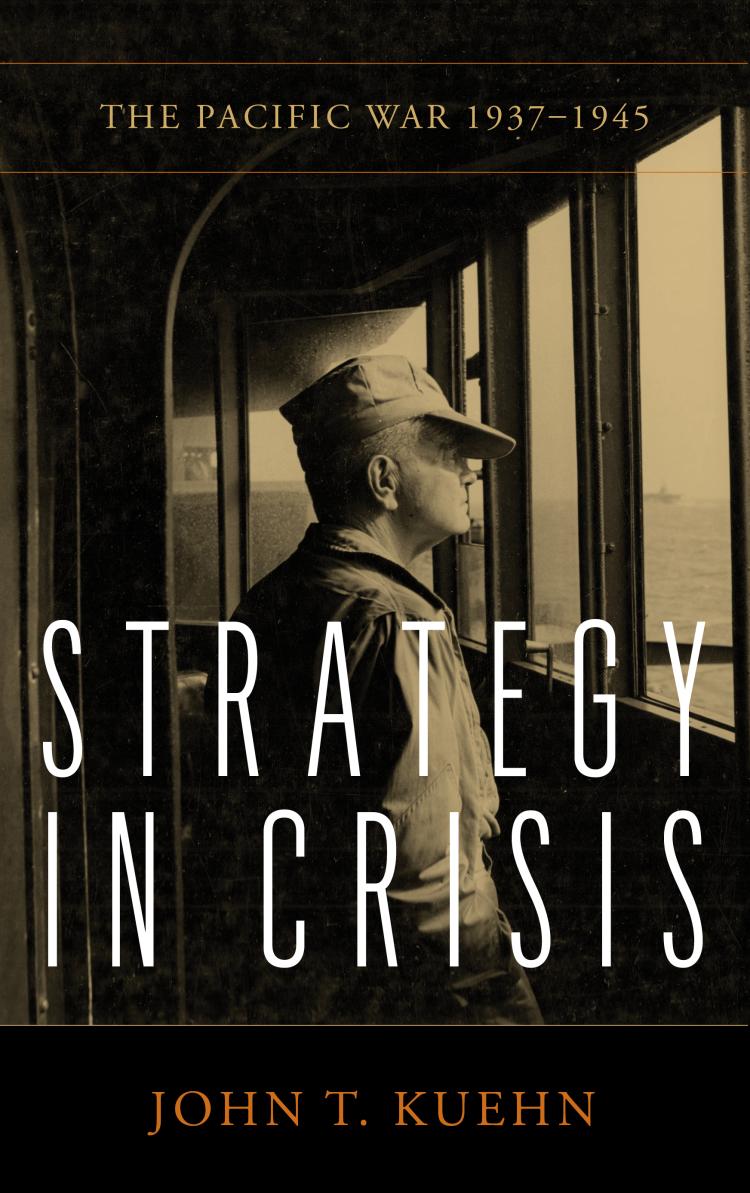Strategy in Crisis
- Subject: Fall 2023 Catalog | Strategy | World War II | Society of Military History Conference
- Format:
Hardcover
- Pages:
240pages
- Illustrations:
9 Maps
- Published:
November 15, 2023
- ISBN-10:
1682477657
- ISBN-13:
9781682477656
- Product Dimensions:
9 × 6 × 1 in
- Product Weight:
15 oz
Overview
The Pacific War (1937-1945) remains a crucial topic for strategic discussion, especially as Japan's push for a broader conflict in 1941 still fascinates historians. That regional push grew into a wider world war with all the major maritime powers, as well as the Soviet Union, in a conflict which challenged the allied response in Asia and beyond.
John T. Kuehn examines the Pacific War from the vantage point of strategy and the execution of that strategy. The allies entered an ongoing Sino-Japanese War in China (1937-1945) which shaped the implementation of strategic decision making for the larger campaigns of the Pacific War. The Pacific War is often regarded as a conflict between the United States and Japan, but it involved a far greater cast of national characters, and the strategic calculations of these actors are addressed by the author in concise detail. The actions of the powers, such as the Dutch, British, Australians, New Zealanders, and the Soviet Union as well as the two primary nations, the U.S. and Empire of Japan, are considered through the strategic paradigm. The author, looking at the strategy of Imperial Japan as well as that of the U.S., concludes that the Axis failures in terms of coalition strategy continued throughout the war, even as the Allies strengthened coalition warfare along fronts.
About the Author
Editorial Reviews
“Concise, precise, and eminently readable. Kuehn here masters the formidable challenges of both succinctly explaining the strategic essence of the greatest naval war in history, while also integrating it into the larger framework of WWII’s global strategy. Laudable.”—Jonathan Parshall, co-author Shattered Sword: The Untold Story of the Battle of Midway
"Strategy In Crisis is targeted at the professional military education student base, but at the same time it provides a cogent narrative of operations and strategy in the Asia-Pacific from 1937 to 1945. Particularly useful is Kuehn's analogy, geographical and in terms of milestones, with the very similar broad strokes that took place in the Soviet-German war far to the west. The Germans and Japanese made many of the same strategic and operational mistakes, and in the same dimensions. Midway as Moscow and Guadalcanal as Stalingrad are brilliant strokes of comparison."—D.M. Giangreco, author Hell to Pay: Operation DOWNFALL and the Invasion of Japan, 1945–1947
"Intermingled throughout the narratives, the author provides cogent examples of how the American military overcame incomplete, incorrect, or erroneous strategic decisions and implementations to develop a set of sea, land, and air strategies to ultimately win the conflict. This is a valuable summary of a complex era of military history well told.”—Sea History




